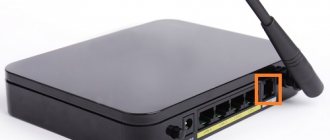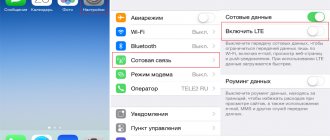Story
While the USSR was launching Gagarin, the US government decided to take brutal revenge... Experts call Claude Shannon, who published the book (1948) Mathematical Theory of Communications, the founder of the idea. The American military engineer actively studied communication channels, creating the prerequisites for the development of networks. The main merit of the inventor was the study of noise models with an attempt to develop stable codes capable of transmitting messages despite interference. In parallel (1945), among the publications of the Atlantic Manfly magazine, a note by the famous researcher Vannevar Bush appeared, describing technologies for distributing information by a centralized server. Experts call the author the father of hypertext; hypertext today is the basis of the World Wide Web.
The main network of the mid-20th century was ARPANET. The foundations of the project were laid by two scientists:
- Joseph Licklider developed the idea of creating a computer center for the US Department of Defense's Advanced Research Projects Agency (ARPA).
- Paul Baran, beginning in 1959, studied the viability of distributed systems. Five years later, the concept of packet transmission of information was born.
The world's first computer networks
In the warm April of 1963, Licklider proposed to the Pentagon to create an intragalactic computer network. Apparently, relying on Darth Vader, the scientist simultaneously shares the idea with Ivan Sutherland and Bob Taylor. Then he quickly leaves ARPA. Taylor and Sutherland conceptualize networking technology by helping promote the computers the Agency sells to various companies. The efforts help the rapid spread of software products. The condition for success was the presence of three terminals, which forced Taylor to constantly change his location inside his own office. Here's the root of the problem:
- Q-32 (Santa Monica, SDC).
- Project genius (Berkeley, University of California).
- Multix (Massachusetts Institute of Technology).
Each terminal occupied a separate workplace. Bob was running around like a squirrel in a wheel. Taylor once said to himself:
- Humanity! The solution is obvious: three terminals must become one.
Thus the idea of ARPANET was born. At the same time, Paul Baran, using the power of the RAND Corporation, continued to savor the problem of survival of systems that had experienced a nuclear explosion. The Americans clearly wanted to invent something... but they hesitated. The Englishman Donald Davis helped, who proposed (1965) to transmit information in packets. A year later, the British team began developing a local area network design. While listening to Sergeant Pepper, Donald sketched out a communications blueprint for the National Physics Laboratory (NPL), forming the basic components:
- Nodes are computers.
- Packages are standardized blocks of information exchange.
- Interface computers designed to provide nodes with temporary channel division (multiplexing), providing access one at a time. They actually acted as routers.
- The process provided for the presence of users (lamers appeared later).
ARPANET
The British’s works attracted the attention of the board (October 1967), which gathered (Gatlinburg, Tennessee) the forefathers of ARPANET. The British demonstration took place on August 5, 1968, forcing the Americans to take action. Larry Roberts, hired by Bob Taylor, proposed using Britain's developments by combining ARPA computers, creating the world's second (let's forget Merit) computer network. Later (1973) both were merged. The performance of the NPL communication channel reached 768 kbit/s, ARPANET - 56.
The creation of the American network proceeded in stages. Bob Taylor, tired of running between terminals, asked director Charles Hertzfeld to allocate money. The boss passed on $1 million, cutting the budget for the ballistic missile project. Hired ($1 million was just enough) Larry Roberts in the spring of 1967 issued a plan for a data exchange protocol. The method of user identification and error correction were taken into account. The concept was completed by Wesley Clark, who again (independently) invented Donald Davis's idea regarding interface machines that manage the packet transfer process. Roberts modifies the original plan, presenting the result in October 1967. Suddenly the committee's attention is drawn to Donald's live demonstration. Americans quickly notice the similarity between the two ideas, their own and the European, along the way adopting the details of the British network they liked.
In the summer of 1968, Roberts draws up a plan to consolidate the Office's computers. On June 21, the mailing of requests to hypothetical project implementers begins. The lion's mass of industrialists is moving back, missing the global meaning of what is happening. Only 12 contractors agree. ARPA cuts off the small stuff, leaving four solid fish. Later, two were eliminated, and the contract ended up going to BBN Technologies on April 7, 1969. Under the patronage of the Virgin Mary, the company conceived a new network.
The team, led by Frank Hertmo, quickly produced the first workable version. The web was united by a mass of small computer interfaces. Later the nodes were replaced by routers. The formed gates carried out the switching of resources. The communication hardware was serial input/output interfaces. Nine months later, the fledgling network began operations. The BBN team continued to gain experience by interviewing the UK team.
The first communication interfaces were implemented by protected Honeywell DDP-516 computers, equipped with a 24 KB internal magnetic drive and a 16-input direct memory access controller. Multiplexing boards communicated with all transaction participants. The channel status indicator lights that hitherto adorned MTS routers immediately appeared. The interfaces interacted, allowing the system to grow indefinitely. Initially, the line united 1 car in Utah, 3 in California:
- University of California (Los Angeles) - Sigma 7 research system.
- ARC (Stanford, creator of the computer mouse, software demos) - hypertext systems 940 (Genius).
- University of California (Santa Barbara) - IBM 360/75 computers (OS/MVT).
- University of Utah School of Computing (Salt Lake City) – DEC PDP-10 computer (TENEX operating system).
First gear
The first “login” message on October 29, 1969 (10:30 p.m.) was sent by University of California (Los Angeles) student programmer Charlie Cline to Stanford. Historians describe the situation as follows:
- In the evening (October 29), the group attempted to transmit the lo symbols. However, the system “fell”. Programmers immediately began searching for errors. The corrected code was uploaded to the Sigma 7 system. Success followed.
A trial communication session between Los Angeles and Stanford took place on November 21. On December 5, all four hosts were able to exchange information. Soon (March 1970) ARPANET crossed the continent, the system was supplemented by the Cambridge Computing Center (Massachusetts). A rapid increase in size followed:
- June – 9 hosts.
- December – 13.
- September 1971 - 18. The use of unprotected (light) Honeywell 316 models began. The machines often served as terminal servers (up to 63 connections) supporting ASCII encoding. New computers were equipped with adapted interfaces, simplifying integration.
- August 1972 – 29. Memory capacity gradually increases (32 kB, 56 kB).
- September 1973 – 40. The network was replenished with the Norwegian NORSAR via satellite. Later London was added, the Swedes arrived. The network covered several countries. To tell the truth, foreign traffic was unpopular.
- June 1974 - 46. December gave birth to the concept of the Internet, which became an abbreviation for long, indigestible network definitions. RFC 675 (Vinton Cerf, Yogen Dalal, Karl Sunshine) standardized transmission techniques. The Internet was a network using the TCP/IP protocol. The conversion of already built infrastructure became possible, including the use of third-party agreements for the transfer of information.
- July 1975 - 57. ARPANET declared operational. The Defense Communications Agency took control over the spending of subsidies for the growing network. BBN begins developing operating systems, first for Pluribus processors, then for C/30.
- 1981 – 213. The US National Science Foundation (NSF) became interested in the project. The CSNET educational network has launched. There was no way to combine both segments directly.
Birth of the Internet
The growth rate reached 1 host / 20 days. The years 1982-83 are considered revolutionary: the TCP/IP protocol was standardized, replacing the previously used NCP. ARPANET became the first subnet of the future Internet. In the fall of 1984, the infrastructure was modified by allocating a separate MILNET segment to the military. The units were united by guarded bridges. The military segment later received the new name NIRPNet.
A 1985 project, NSFNet, was designed to develop a research and educational network. Civilian ARPANET facilities began to be phased out, with the last hosts going down in July 1990. On February 28, 1990, Vinton Cerf wrote a poetic requiem:
- It was the first bird, it will always be the first, it was the best, but now we are forced to bury the ARPANET forever. I ask for a moment of silence to honor the farewell with tears. I will cry for the good old times, love, many years of faithful service. The work is finished. Put your bags to bed, friend, and go to sleep.
Beginning in 1986, NSFNet systematically grew, capturing the territory of the United States. The modems provided a speed of 56 kbit/s. Growing demands forced experts to produce new productive standards. The end of the 80s brought the world the first Internet providers. Expansion into Australia, Europe, and Asia began. Initially (1988), a radio relay link (Princeton University - Stockholm) of low-speed satellites crossed the ocean, giving birth to the intercontinental network. In the summer of 1989, 500,000 subscribers used e-mail.
On January 1, 1990, PSInet launched a commercial alternative branch of the Internet that exists to this day. In the spring, NSFNet gave Europe a high-speed (1.5 Mbps) helping hand. In 1992, Vinton Cerf and Bob Kahn organized the non-profit Internet Society (the announcement took place on June 20, 1991). Today the structure includes over 100,000 companies and private users. These individuals are usually called members of the group of fathers of the World Wide Web.
Etiquette
The instructions from the University of Massachusetts laboratory read:
- Business activities other than direct government needs are prohibited. Personal greeting messages, such as hello, are allowed to ARPANET subscribers. Sending messages of a commercial or political nature is illegitimate. By sending spam, students discredit the institute. Government agents will arrive to investigate illegal activity.
WWW Revolution
The real popularity of the concept was brought by Tim Berners-Lee, who created the idea of WorldWideWeb - the first browser-editor that allows the user to view the resources of remote servers. The engineer developed:
- Hypertext language HTML.
- HTTP data transfer protocol.
- Server side software.
- The world's first web page described the WWW project.
In 1995, the Internet revolution took place. E-mail services, instant messengers, and telephony were born. Users flooded forums, blogs, social networks, and electronic stores. Ethernet constantly produced new speeds. In the late 90s, traffic doubled annually, Fidonet died. Today the audience size is estimated at 3.6 billion.
OSI network model layers and TCP/IP layers
(OSI) Open System Interconnection is a multi-layer model for the interaction of open systems, consisting of seven layers. Each of the seven levels is designed to perform one of the communication stages.
To simplify the structure, most networks are organized into sets of levels, each subsequent one being built on top of the previous one.
The purpose of each level is to provide certain services to higher levels. At the same time, the implementation details of the service provided are hidden from them.
A protocol is a formalized rule that defines the sequence and format of messages exchanged between network components located at the same level, but in different nodes.
The protocols that implement the OSI model have never been put into practice, but the names and layer numbers are still used today.
- Physical.
- Duct.
- Network.
- Transport.
- Sessional.
- Representation.
- Applied.
For better understanding, I will give an example. You open a website page on the Internet. What's happening?
The browser (application layer) generates a request via the HTTP protocol (presentation layer and session layer), packets are generated, transmitted to port 80 (transport layer), to the server IP address (network layer). These packets are transmitted through the computer's network card to the network (link and physical layer).
OSI Layers - A Brief Overview
Physical level . In short and simply, at the physical level, data is transmitted in the form of signals. If the number 1 is transmitted, then the task of the level is to transmit the number 1, if 0, then transmit 0. The simplest comparison is to tie two plastic cups with a thread and speak into them. The thread transmits vibration physically.
Data link layer . The data link layer is the technology of how the nodes (transmitting and receiving) will be connected; it recalls the topology of networks: ring, bus, tree. This level determines the order of interaction between a large number of nodes.
Network layer . Combines several data link networks into one network. For example, we have a ring, a tree and a bus; the task of the network level is to combine them into one network, namely, to introduce common addressing. At this level, the rules for transmitting information are determined:
- Network protocols (IPv4 and IPv6).
- Routing and route construction protocols.
The transport layer ensures reliability in the transmission of information. It controls the sending of packets. If the package is sent, then a notification about the successful delivery of the package should arrive (to the computer that sent the package). If notification of successful delivery is not received, you need to send the package again. For example TCP and UDP.
Session layer . Responsible for managing communication sessions. Performs tracking: who, at what moment and where transmits information. At this level, data transfer synchronization occurs.
Presentation layer . The layer provides a "common language" between nodes. Thanks to it, if we transfer a file with a .doc extension, then all nodes understand that this is a Word document, not music. At this level, stream encryption is added to the transmitted data packets.
Application layer . Interacts between an application (such as a browser) and the network.
TCP/IP levels
The TSP/IP protocol suite is based on a proprietary model that is based on the OSI model.
- Application, views, session = Application.
- Transport = Transport.
- Network = Internet.
- Channel, physical = Network interface.
Network Interface Layer
The network interface layer (called layer 2 or data link layer) describes the standard method of communication between devices that are on the same network segment.
A network segment is a part of a network consisting of network interfaces separated only by cables, switches, hubs and wireless access points.
This layer is designed to communicate between nearby network interfaces, which are identified by fixed hardware addresses (for example, MAC addresses).
The network interface layer also defines the physical requirements for signaling between interfaces, cables, hubs, switches, and access points. This subset is called the physical layer (OSI), or layer 1.
For example, Layer 1 interfaces are Ethernet, Token Ring, Point-to-Point Protocol (PPP), and Fiber Distributed Data Interface (FDDI).
A little about Ethernet using the example of a web page frame
Ethernet packets are called frames. The first line of the frame consists of the word Frame. This line contains general information about the frame.
Next in the frame is the header - Ethernet.
After the frame header comes the IPv4, TCP, and HTTP protocol header.
At the end there is an HTTP header with a GET request (GET is one of the options for a request to a web server).
Thus, the purpose of the frame is to request the content of a web page located on a remote server .
The full Ethernet header contains values such as DestinationAddress and SourceAddress, which contain the MAC addresses of the network interfaces.
DestinationAddress shows the MAC of the gateway on the local network, not the web server, since layer 2 protocols “do not see” beyond the local network.
The EthernetType field indicates the next higher layer protocol in the frame (IPv4).
Switches read the addresses of local network devices and limit the propagation of network traffic to only these addresses. Therefore, switches operate at layer 2.
Internet layer
The Internet layer is called the network layer or layer 3. It describes an addressing scheme that allows devices on different network segments to communicate.
At the Internet level, the IP protocol primarily operates; devices operating at level 3 are routers. The router reads the destination address of the packet and then forwards the message along the appropriate path to the destination. You can read more about routing in the article Routing in Windows.
If the address in the packet belongs to the local network or is a broadcast address on the local network, then by default such a packet is simply discarded. That's why routers are said to block broadcasts.
The TCP/IP stack is implemented by Microsoft at the Internet level (3). Initially, only one IPv4 protocol was used at this level, later the IPv6 protocol appeared.
IPv4
Protocol version 4 is responsible for addressing and routing packets between nodes on dozens of network segments. IPv4 uses 32-bit addresses. 32-bit addresses have a fairly limited space, and therefore there is a shortage of addresses.
IPv6
Protocol version 6 uses 128-bit addresses. Therefore, it can determine many more addresses. Not all routers on the Internet support IPv6. Tunnel protocols are used to support IPv6 on the Internet.
In Windows, both versions of the protocols are enabled by default.
Transport layer
The transport layer of the TCP/IP model represents the method by which devices send and receive data. It also creates a mark about the purpose of the data for a specific application. TCP/IP includes two transport layer protocols:
- TCP protocol . The protocol takes data from the application and processes it as a stream of bytes. The bytes are grouped, numbered, and delivered to the network host. The recipient confirms receipt of this data. If confirmation is not received, the sender resends the data.
- UDP protocol . This protocol does not provide a guarantee or confirmation of data delivery. If you need a reliable connection, then you should use the TCP protocol.
Application layer
The application layer is the communication stage at which network services are standardized. Many people know application level protocols: POP3, HTTP, Telnet, FTP and others. As a rule, programs working with these protocols have a friendly, intuitive interface. By studying this material you have learned the basics of computer networks.
Reasons for creating global networks
Internet history scholars have erroneously believed that networks have a duty to act as a shield against nuclear attack. The RAND Corporation initially presented a similar opportunity, which was later eliminated from the project. The main goal is to ensure the survival of the system, connect command posts, and provide functionality even if most of the segments are destroyed. Of course, destruction was supposed to be a nuclear explosion.
Computer networks. The world's first computer network ARPANET. Purpose and classification of networks
Today it is difficult to assess the full importance of the issue of data transfer.
For people, this is a necessary attribute of existence, because without the ability to cooperate with each other, we will not be able to learn new things, make scientific discoveries, etc. The most important area at the moment where the use of data transmission is necessary for its successful functioning is the field of computer networks. We don’t always think about how millions of gigabytes of information are transferred between our computers. Today there are more than 130 million computers in the world and more than 80% of them are connected into various information and computer networks, ranging from small local networks in offices to global networks such as the Internet. In this lesson you will be able to study what computer systems and networks are, get acquainted with the history of the creation of the first computer networks, master the basic protocols, classification of computer networks and their main components. Topic: History and classification of computer networks
Lesson: Computer systems and computer networks. The world's first computer network is ARPANET. Protocols. The first domestic information networks.
Purpose and classification of computer networks, their main components
Infrastructure
Operators provide access to a worldwide network of personal computers. Providers of the first level (tier-1) are able to reach any subnet directly. There is no commission assigning the title; whoever can fulfill the requirements knows. The first level provider provides its own routing table. The modern hierarchy gives the following definitions:
- Tier-1 – the provider reaches the Internet through exclusively peer-to-peer connections.
- Tier-2 – the provider buys traffic transit, in addition to its own infrastructure.
- Tier-3 – complete absence of own capacities. Traffic is completely purchased.
Sometimes echelons quarrel. Then some subnets (from different providers) stop seeing each other. This has happened. Usually one side gives up, buying up someone else's transit traffic. Less often, collective complaints from disadvantaged people force enemies to reconcile. An interesting point: second-tier clients live excellently, since resellers usually take the traffic of several companies.
Taking advantage of the lack of a certification system, providers sometimes arbitrarily recognize themselves as captains of the first rank, trying to stand out from the crowd. Paradoxical facts add to the confusion:
- Second-tier operators are often larger than the cream of the crop.
- “Lower layers” can buy a very, very small part of the traffic, using mainly their own channels.
- The speed of second-tier providers is often higher.
Marketers throw out objective information that is far from the scope of assignment of classification:
- Number of subscribers, routers.
- Length of lines.
Tier-1 providers provide free peering to companies that meet a number of conditions. Those who wish can buy the “right” without receiving the status of the first link due to political and financial reasons. Experts recommend identifying core networks whose infrastructure serves as the backbone. Originally it was ARPANET, the project was closed, replacing NSFNet. A growing number of operators added their own physical lines, bypassing the early adopters. On April 30, 1995, the NSFNet infrastructure was retired. The vast majority of Tier-1 are North American, with Japanese NTT present and Scandinavian Telia Sonera.
Client-server pair
Let's start with definitions.
A client is a module designed to generate and transmit request messages to the resources of a remote computer from various applications, followed by receiving results from the network and transmitting them to the appropriate applications.
A server is a module that constantly waits for requests from clients to arrive from the network and, having accepted the request, tries to serve it, as a rule, with the participation of the local OS; one server can serve requests from several clients at once (alternately or simultaneously) /
Simply put, a Server is a computer on which a program or printer is installed. A client is a computer that connects to the program, works with it and prints out some results, for example.
In this case, the program can be installed on the Client, and the program database on the Server.
Control
The World Wide Web is devoid of centralized control. The transfer of information is managed by protocols, organizations, providers. Domain names are administered by the international service ICANN. The distribution of IP addresses is managed by the Regional Internet Registrars:
- African Network Information Center (AfriNIC).
- American Internet number registrar.
- Asia-Pacific Network Information Center.
- Latin American and Caribbean Internet Address Registrar.
- European RIPE NCC.
Previously, on October 1, 2021, DNS zones were managed by the US National Telecommunications and Information Administration. The functions have now been transferred to IANA. The overall coordination of developers is carried out by the Internet Society.
First steps
In 1969, on October 29 at 9 pm, the first communication session was held between the first nodes of this network, located 640 kilometers apart - at the University of California Los Angeles and at the Stanford Research Institute. Operator Charlie Cline was attempting to make a remote connection to a computer located at Stanford. His colleague Bill Duvall confirmed the successful transmission of each entered character by telephone. At first, only three “LOG” characters were sent, after which the network stopped working. The "LOG" characters should have been the word LOGON (login command). The system was returned to working condition by half past ten in the evening and the next attempt was successful. This date is considered to be the day the Internet appeared.
Fidonet
Let's give an example showing the global difference of the Internet. The infrastructure itself does not allow you to name the network. It was directly stated above: protocols play a key role. Manufacturers are beginning to support standards organizations. However, the corporate fervor of the developers can easily be cooled by a single enthusiast. Even if Fidonet loses popularity, the project shows the main thing: the Internet is formed by a stack of protocols and can easily be replaced by another technology. The name will most likely remain by inertia; today, few experts remember the origins of the terms.
The network was created (1984) by American programmer Tom Jenningson. The software was engaged in the exchange of advertisements between two electronic boards. The technology used a regular telephone line at night (charging is cheaper). The exchange hour scheduled by the regulations stopped access for users (who were mostly asleep). The number of subscribers gradually grew because the connection was free. The client bought a phone, installed the software, and started communicating.
The increasing mass of those interested forced Fidonet to be divided into segments, forming a tree. Addressing has become two-level. The October 1986 meeting introduced four-tier appeals, taking into account the presence of several continents. A permanent gateway to the Internet has appeared. The peak of popularity occurred in 1996. Then the number of nodes drops sharply.
Today, in addition to telephone calls, users have the opportunity to use network infrastructure, including Internet communications.
Batch Processing System
The first computers were very huge and expensive, sometimes reaching the size of buildings. They were not intended for ordinary users, but only processed batch data.
Processing of batch data was often based on the most powerful public electronic computer with an improved degree of reliability (mainframe).
The user's task was to prepare a punched card with the initial data, which he transferred to the computing center. The task of the center operators was to enter data from this punched card into an electronic computer; after processing it, users could receive results in about a day. At the same time, if there was an error in the punched card, the result could be delayed for another day.











